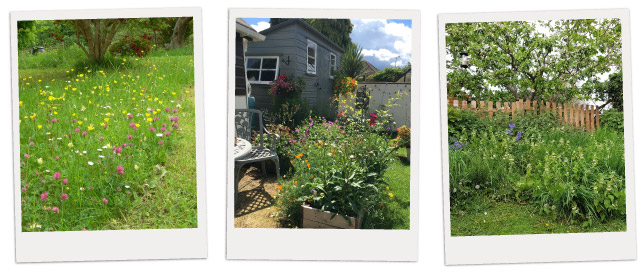19th April 2023
With the help of the experts at Bumblebee Conservation Trust, we set out to learn more about these familiar but elusive insects and how we can all take some small steps to help protect our bees and the vulnerable ecosystem we share with them.
Here’s what the science-led charity told us about our humble bees and how we can save them together…
When you see a bumblebee flying around and visiting flowers, it is never far away from starvation because a full ‘tank’ of nectar, (which provides the energy for flight) only lasts about 40 minutes. Sometimes, they need a helping hand!
Rescuing bumblebees – what you need to know
One of the most common questions colleagues at the Bumblebee Conservation Trust are asked, is “Should I feed a bumblebee sugar water?” The simplest answer is only as a last resort, when there are no bee-friendly flowers around and when you are certain the bee is not just resting, of which they can do for about 30 minutes and up to almost 45 minutes!
Of course, if the bumblebee is at risk of being stepped on and if it’s safe for you to do so, you can move it to a flower or a sheltered place such as long grass or leaf litter.
How to make sugar water
If you find a bumblebee who hasn’t moved for an hour during winter or early spring and there are no bee-friendly flowers which you can gently move the bumblebee on to, mix 50/50 white sugar and water and offer a few drops of the mixture in a teaspoon or upturned drinks cap to the bee and allow it time to recuperate.
Never give bumblebees honey, because it can contain pathogens and it isn’t advisable to use brown sugar as this is harder for bumblebees to digest. Check out the Bumblebee Conservation website for more information on deciding whether a bumblebee needs help.
We can ‘bee the change’ to help save the sound of summer
Here are a few small things that anyone can do to help us save the sound of summer:
🐝 The single most important action anyone can take is to plant bee-friendly flowers.
🐝 For gardening beginners, we have lots of free ‘how-to’ guides and information on creating bee-friendly spaces and plant suggestions for pots, window boxes to garden borders. All can be found here on our Bee the Change website.
🐝 Gardeners looking for inspiration can search ‘Bee kind,’ our free online directory of 700 bee-friendly plants and is accessible from our Gardening for bumblebees webpage.
🐝 Mow your lawn less! Avoid cutting the grass more than a couple of times during the growing season and wait for lawn wildflower bumblebee favourites like birdsfoot trefoil, clover and dandelions to finish flowering.
🐝 Let an area of garden grow wild, with wildflower annuals and perennials.

🐝 Don’t disturb hibernation spots (usually North-facing, dry banks soil and compost heaps) from October to March
🐝 Think carefully about using pesticides. They can negatively impact bumblebees in a number of ways. Read the Bumblebee Conservation Trust pesticide position statement for further information
🐝 Learn to recognise the different species on our website, or download our free ‘What’s that bumblebee?’ app about our 8 most common species (on Apple and android phones and tablets). You can even have a virtual queen bumblebee in your room with the 3D augmented reality feature.
🐝 If you can spare an hour, once a month between March and October and enjoy local walks, bumblebees need volunteers to tell us which species and how many they see during bumblebee season, so that we can continue to focus our projects to help those species struggling to survive. BeeWalk (www.beewalk.org.uk) is a national monitoring scheme which collects bumblebee data from across the UK and we gather this data by recruiting and training volunteer “BeeWalkers”.
🐝 Become a member of the Bumblebee Conservation Trust and get regular updates on our work plus much more.
Sowing wildflowers to help bumblebees
If you want to sow a patch of wildflowers in your garden, autumn is a good time but you can sow in the spring for summer flowering with these easy steps:
- Prepare a patch of soil by weeding and finely raking the top couple of inches of soil. If sowing onto a lawn, grass roots should be thinned out and removed because established lawns will usually out-compete many wildflower species. There is no need to add any fertilizer to the soil, wildflowers love nutrient-poor soil.
- Scatter your wildflower seeds and rake them over gently. They will need regular watering if sowing in the spring, but if sowing in autumn, just water once and the seeds will remain dormant until warmer weather. Grass will out-complete wildflower seeds so should be thinned out to improve the germination and growth success, and consider sowing Yellow Rattle, (Rhianthus minor) nicknamed the Meadow Maker because it helps to make way for other wildflowers in a lawn.
Please make sure that when buying your wildflower seeds, that they haven’t been treated with pesticides or fungicides and are UK-native species!
You can download a simple guide to sowing wildflower seeds from the Bumblebee Conservation Trust Bee the Change website.
